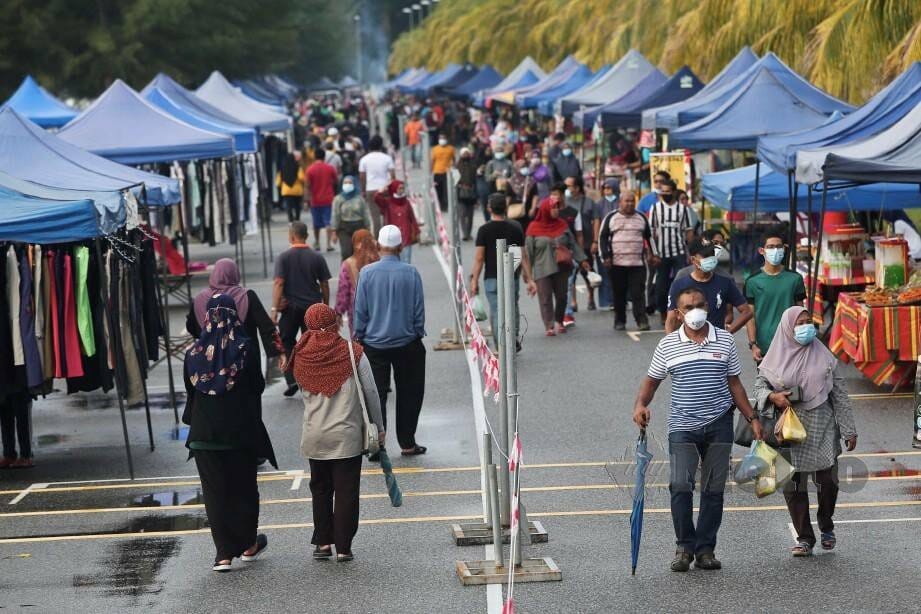
Published in Malay Mail, Business Today and Asia News Today, image by Business Today.
As a fast-developing fad, non-fungible tokens (NFTs) have been making the headlines last year and increasingly sought after, particularly by blockchain and cryptocurrency fans, for their non-interchangeable (i.e., unique and non-duplicable) quality to digitally represent a “prized” collectible.
The value of a NFT – as digital asset – is derived from the original (physical and tangible) asset and comes with built-in authentication that serves as “immutable” (tamper proof) ownership. As Forbes online magazine says, “[c]ollectors value those “digital bragging rights” almost more than the [digitalised] item itself”.
However, the craze or mania about NFT obscures its notoriety and so-called “dark side”. One can’t dismiss that NFTs also have many pitfalls behind their seemingly near-infallible status (i.e., in terms of security and value), leaving unsophisticated users facing losses and even risks of bankruptcy.
This NFT issue could become a thorny one in Malaysia – given the public’s rising exposure and concomitance of popular reception on the back of perceived prestige and “aura” of exclusive and exceptional ownership.
Finder.com indicated that 23.9% of Internet users in the country currently own NFTs. Of this, Finder.com postulates that 48.8% of people aged 18 and 34 would be most likely to own NFTs. This is critical as this age category (i.e., youth) was criticised for lacking financial literacy in 2020.
The same report also highlighted that another 10.5% of Internet users in general have said that they plan to acquire NFTs. It’s expected that NFT adoption could, therefore, hit 34.4% shortly.
Before further delving into the pitfalls and drawbacks of NFTs, let us have a clearer understanding of NFTs first.
As alluded, NFT is a collectible digital asset that acts as a unique digital certificate of authenticity and ownership for virtual items verified on blockchain technology (askST: Is it safe to invest in cryptocurrencies like bitcoin? And what are NFTs?, Straits Times, March 29, 2021).
Generally speaking, most items can be made into NFTs as long as they exist in a digital format. Some popular NFT applications include art, music, videos and virtual property.
The market for NFTs has been around for a few years. With the pandemic-driven lockdown, people started to look for another and better way to display and collect artistic creations on the Internet and this had caused the NFT market to heat up.
NonFungible.com (statistics website for NFTs) revealed that the total daily sales of NFTs peaked at USD411 million (approximately RM1.7 billion) on August 29, 2021. At the time of writing, the total daily sales are between USD50 million (approximately RM209 million) and USD150 million (approximately RM628 million).
There’s no doubt that NFTs provide an excellent channel or medium for artists to sell their work without conventional constraints.
Moreover, some NFT platforms (e.g., OpenSea and MakersPlace) allow creators to earn royalty fees on secondary sales. This means that the creators can permanently receive a cut of all future sales of their work, thereby maintaining their career and living standards.
Penang-based artist Kenny Ng, for example, indicated that NFTs provide him with the opportunity to expand his creativity, showcase his works as he sees fit, and keep track of copyright ownership and records of creation.
However, the existence of a secondary market has also attracted speculators and they are trying to capitalise on the emergence of NFTs to make a fortune.
This is because they can leverage on some platforms (e.g., Rarity Tools and HowRare.is) to search for rare NFTs in real-time and profit from the difference in the resale of these NFTs.
It’s worth pondering as to whether NFTs are really full of profit or lucrative opportunities.
The answer isn’t quite so, actually.
There are several issues with NFTs that needs unravelling:
i. Ownership and Copyright
People should know that purchasing an NFT does not mean that you have the copyright of the creation.
According to the copyright laws in various countries, buyers aren’t entitled to reproduce, translate, adapt and edit the creators’ work unless they have permission from the creators.
In other words, even where your ownership of a particular NFT (thanks to blockchain technology) is publicly known, accusations of copyright infringement(s) can fly if you try to utilise the purchased NFT for commercial purposes without (due) authorisation or approval.
Thus, Malaysians need to be vigilant and avoid breaking the law due to negligence or lackadaisical attitude.
ii. Volatility
Celebrities in various countries have contributed to popularising NFTs in the mainstream, thus, promoting their sales to an impressive extent. Nonetheless, they also exacerbate the problem of price volatility in NFTs.
For instance, the sales of Bored Ape Yacht Club NFTs have surpassed USD1 billion due to increased interest from celebrity collectors (e.g., NBA star Stephen Curry and hip-hop artist Eminem).
Besides, famous pop icon Jay Chou’s friend released 10,000 Phanta Bear NFTs through a joint venture fashion brand company with him, with each bear sold for 0.26ETH (approximately USD1,000).
After these NFTs were literally snapped up in less than 40 minutes, Jay Chou’s record label (recording company) had to clarify that he wasn’t involved in any planning and operation of the business, nor did the sale make any profit.
It can be seen that as long as a NFT has been “hallowed” with celebrity effect, the NFTs’ reputation and sales will soar.
Such a scenario will then enhance the secondary sale price as people may think that the NFTs with celebrity effect will appreciate in value over the long term.
However, the reality is not so.
Going back to the previous example, the average price of Phanta Bear thereafter dropped from the highest point of 7.8717ETH to the current 1.4152ETH within 2 months – a massive dip.
With regards to such a phenomenon, Footprint Analytics pointed out that celebrity NFTs are more likely to have difficulty sustaining value, volume and liquidity as the buyers are mostly made up of fans and other fear of missing out (FOMO) traders, leading the prices to rise rapidly in a short period of time.
Therefore, seekers should remember not to jump on the bandwagon blindly.
iii. Legal but Unregulated
In pursuance of Malaysia’s Capital Markets and Services (Prescription of Securities) (Digital Currency and Digital Token) Order (2019)/2019 Order, made under the Capital Markets and Services Act 2007, a digital token is defined as a digital representation which is recorded on a distributed digital ledger, whether cryptographically-secured or otherwise.
Since NFTs are relying on blockchain technology (distributed digital ledger), they can be definitively categorised as digital tokens.
However, whether NFTs can be properly regulated as a form of security (under the 2019 Order) by the Securities Commission (SC) remains ambiguous/amorphous and not adumbrated precisely.
Under section 3 of the 2019 Order, a digital token needs to fulfil all the requirements laid out in the 2019 Order before it can be classified as a security.
As laid out under section 3(1): A digital token which –
(a) is traded in a place or on a facility where offers to sell, purchase, or exchange of, the digital currency is regularly made or accepted;
(b) a person expects a return in any form from the trading, conversion or redemption of the digital currency or the appreciation in the value of the digital currency; and
(c) is not issued or guaranteed by any government body or central banks as may be specified by the Commission,
is prescribed as securities for the purposes of the securities laws.
NFTs do exhibit overlapping and common characteristics with digital tokens and can be considered as a specific species of the wider genus (digital tokens).
In practice, nonetheless, NFTs are supposed to be a “one-off/one-time” and “whole-thing” transaction. This is unlike typical securities, unless “fractionalisation”, i.e., breaking of a NFT into portions for multiple ownership applies in the form of Initial Exchange Offerings (IEOs). Fund-raising, moreover, is done for corporate (company made up of shareholders) purposes and interests as opposed to a sole proprietor’s (individual) benefits.
As it is, regulators have yet to enact any rules and regulations specific to NFTs.
Those interested in NFTs should research and subsequently trade at their own risk as there’s no clear framework to resolve disputes arising from trading NFTs as securities.
iv. Fraud and Scam
Currently, everyone is free to upload their NFT products on to trading platforms even without any verification.
This creates a loophole for criminals to profit by copying or imitating the work of famous creators.
In a case that shocked everyone, a scammer imitated the painting style of the famous anonymous British graffiti artist Banksy and made it into an NFT, which was then sold to a collector for more than USD300,000.
Fortunately, the scammer returned the money to the collector after a heated discussion.
The Chief Scientist and founder of cryptocurrency analysis company Elliptic, Tom Robinson, has pointed out that the action of buyers bidding on OpenSea (the largest NFT market) is irreversible/irrevocable.
That is to say, scammers masquerading as sellers can quickly transfer cryptocurrencies elsewhere after the transaction is done and then exchange them for the common currency. At this point, the buyer will not be able to recover the lost money.
Therefore, people are urged to pay closer attention to the background of the NFT sellers and only buy from verified merchants.
As the NFT trend in Malaysia is gaining momentum, the government should attach importance to this area and frequently remind people to be aware of the pitfalls.
Besides, further legislation to regulate NFTs is necessary to ensure Malaysians don’t fall into the trap and lose money.
Lastly but definitely not least, the public themselves must be alert and not blindly buy NFTs or put all the eggs in one basket for the sake of satisfying a naïve fascination with the latest so-called “investment” vogue.
With the right exposure and adequate market-savvy knowledge, Malaysians will not be seriously affected even when the NFT bubble burst.
Jason Loh Seong Wei and Tan Tze Yong are part of the research team of EMIR Research, an independent think tank focused on strategic policy recommendations based on rigorous research.

